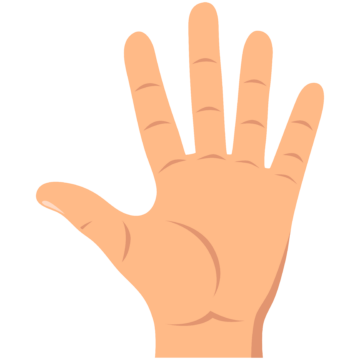Left Hand Piano Exercises to Help your Hands Cooperate

Playing piano with both hands takes time and practice. Here are some left-hand piano exercises to get your hands in sync.
As you start to play the piano, you can have the right hand under control after a few practice sessions. But that left hand keeps making itself known in less than desirable ways. When you put two hands together, it seems that the left hand can’t get with the beat.
Just like the squeaky wheel needs some oil, the left hand may need a bit of attention to cooperate on the piano. We’ll show you some left-hand piano exercises to improve your strength and agility.
Watch out! Your left hand might soon start showing the right hand up.
Why won’t my left hand cooperate?
It can be frustrating that the left hand can’t seem to fall into the groove with the right. But there are a few reasons why left-hand cooperation isn’t second nature.
The non-dominate hand
If you’re left-hand dominant, your left hand is more awkward than your right. Try switching the pen to your left and print your name. Some fumbles are bound to happen.
And if you are left-hand dominant… well, you may have an advantage over the rest of us.
Not the melody line
Some pieces switch things up and give the left hand the melody. But, most often, the left hand is just playing back up. This means the left hand gets a lot of harmony notes and chords. Our ears can help us fill in gaps with the melody line and tell us if we are on the right track. In harmony, it’s not so cut and dried. Our eyes and ears have to work harder to find the right notes. This can make it harder for the left hand to keep up.
The bass clef
Your left hand mostly hangs out in the bass clef. This means you have to think backward as you find the notes going down from middle C. Going up with Every Good Boy Does Fine is one thing. But, bringing the notes down from Good Boys Do Fine Always is another entirely. Not only do your fingers get a workout, but so does your brain!
More stretches and more notes
You often have more notes and bigger reaches in the left hand to top it off. It might have four notes to play simultaneously, then hop down to C2 and back up for another chord.
This means your weaker hand is doing more work in unfamiliar bass clef territory. That’s a lot for your left hand to tackle! But, with a few tips and the right exercises, you can strengthen the left hand to play its part.
Must-Try Left Hand Piano Exercises For Beginners
For the best coordination in your left hand, try out these tips:

Squeeze a stress ball.
Strengthening the muscles in your weaker hand can help it perform better on the piano. A stress ball is a great way to improve your left hand (while you release stress). This exercise can help your piano playing even when you’re away from the piano.
Before you touch the piano keys, use a stress ball or other finger exercises to warm up the muscles in your left hand.

Play block chords as broken chords.
Three-note block chords, called triads, are very common in the left-hand music line. To ensure your fingers find the right notes easily, you can expand these chords by playing them as individual notes.
A good exercise is first to play the block chord as it’s written. Then play each note individually up and down and end on the block chord. Go through the bass clef in the sheet music with this practice. When you are done, play the music exactly as written. After that workout, your fingers will be ready to attack the keys!

Practice a two-octave scale.
What key is your current piano piece in? Look carefully at the sharps and flats it uses. Then start on the keynote and take your left hand up and down a two-octave scale.
If you are unfamiliar with the proper fingering for scales, buying a book of scales in different key signatures or Hannon exercises can be useful. These should have the proper fingering written next to most notes. You can learn proper fingering while your fingers become familiar with the notes in the key signature.

Play the melody line with your left hand.
Many beginning piano songs let the left hand take it easy. You may have a few whole notes, a few simple chords, and several rest notes. This allows your left hand to get used to its role without pushing it too hard. However, if you want to give your non-dominant hand a workout, you can let the left hand take over the right-hand part and play the melody.

Play slowly.
Sometimes the left-hand line can become complicated. It’s not always just whole notes, rests, and block triads. Slowing down your speed lets you give each note a clear, crisp sound.
There’s the tendency to speed things up to hide flaws in your playing. But, if you want to improve your skills and correct mistakes, this is counter-intuitive. By slowing down your playing speed, your eyes have time to read the notes correctly. Then your fingers know which keys to hit.
A metronome can be a useful tool to make sure you keep a slow and steady pace. Set it to the 40-60 BPM range. Once you practice the left hand slowly to catch each note, you can start to speed things back up.
Play the left hand with a stronger dynamic.
Usually, you play the left hand softer than the right. And that’s as it should be. If the melody line is in the right hand, the left hand should support it, not overpower it. However, as you work to improve the strength and skill of your left hand, try reversing the roles.
Let the left hand get the attention for once when you play both hands together. This allows you to build strength (and confidence) in the non-dominant hand. It also lets your ear decide if the left hand knows its stuff or is just hiding behind the skills of the right hand.
Try shadow playing in the left hand.
For most of these practices, you want to isolate the left hand to get it up to speed. However, in this exercise, you can play the melody in the right hand and let the left hand tap out its part of the keys. Shadow playing is a good exercise after your left hand has done some work. This practice lets you gain confidence and coordination when you are ready to put the two hands back together. This is also a good exercise when you have downtime to practice but don’t have a piano close by.
Those are some tips to get your left hand in sync. For the best left-hand cooperation on the piano, practice makes perfect.
Looking for more ways to keep your left hand honest on the keys? You can download the Simply Piano app. Not only do we equip you with sheet music and lessons, but we’ll also show you where your notes head in the wrong direction in real-time. Your left hand can stay on track and find its groove with your right hand.









